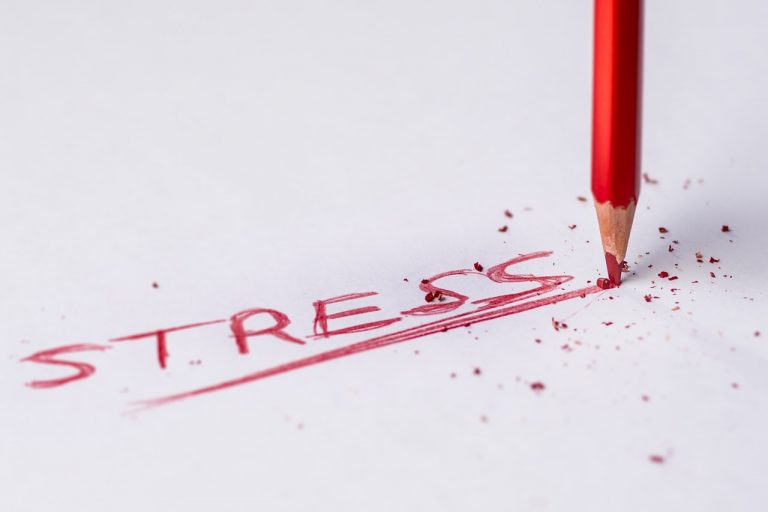J
ust the other day I was waiting in line at the grocery store and I noticed that on the cover of Time magazine was a female with her eyes closed and the title said “MINDFULNESS: The New Science of Health and Happiness.” Now, minded (no pun intended) that I teach children about science for a living, and the one thing that I emphasize to them is that science is everything. Without a doubt, this holds true to the effect of mindfulness on one’s health and happiness. What begs the question, though, is that behind all this science, is there a magic formula to obtain these two big Hs?
So What Is Mindfulness?
This concept has recently found its way from the East to the West and has become a part of many workplaces, schools, and institutions. It is slowly proving beneficial for not only educators, but also for students. Scientists are working to show how people can change their mind and body through the practice of being more mindful. How I see it, being mindful is having a mind that is full. Full of what, you might ask? THE PRESENT MOMENT.
The Latest Research on Mindfulness
Over the past 10-15 years, research has demonstrated the positive effects of mindfulness practice on one’s social, emotional, and physical well-being. Mindfulness through meditation practice has shown to influence the structure and neural patterns present in the brain. There has been evidence that suggests that this practice improves self-esteem, attention, sensory processing, emotional regulation, quality of sleep, and overall health.1 Based on reports in levels of the stress hormone cortisol, individuals who regularly engage in mindfulness practices have reported less stress, anxiety, depression, and anger. 1
There has also been a link between regular mindfulness practice and quality of communication between intimate partners.2 This, in turn, has also been beneficial in terms of daily interactions that parents have with their children and the increased satisfaction in their own parenting skills.3
How to Introduce Mindfulness Into Your Daily Routine
Being present is being full of groundedness in your feelings and in touch with your emotions as they exist now. Some people call it the “practice of meditation.” Many practitioners focus on “conscious breathing” while being mindful.
At a conference I attended this past school year, the presenter began by having all 400+ of us in attendance sit quietly with our eyes closed, while either sitting on the floor or in our chairs. He had us perform a progressive muscle relaxation technique.
We began the exercise by taking three deep belly breaths and slowly exhaling. While doing so, we imagined that any tension we had in our body would go away. We started by focusing on the muscles in our face relaxing and worked down our neck and then to our back and releasing any tension down our arms and out our fingertips. He pointed out that while we were relaxing that we should feel this mental and physical shift downward and slowly becoming more grounded in our position with each breath. Then, we inhaled through our nose and while slowly exhaling out our mouth, we visualized our lower body releasing up pent up tension in a similar manner – down our thighs, knees, lower legs and out our toes.
There are so many variations and styles to mindful practice. One of my personal favorites is through the moving meditation exercise of Tai Chi Ch’uan. I am a bodily-kinesthetic kind of guy where doing something active and moving around is quite relaxing. I will also take a trip to the local golf course and spend time chipping, putting, and hitting balls. Other times, I enjoy shooting some hoops by myself. The point to mindfulness is that it enhances your self-awareness and increases your physical and emotional state of relaxation.
For some people, awareness comes in the form of mindful listening to peaceful music and performing relaxation breathing. Others enjoy mindful writing and keeping a journal or expressing their awareness and present emotions through drawing or painting pictures. You can also be mindful when you eat or drink something. Noticing the food’s texture, aroma, and taste would be a great way to do this.
At a faculty meeting, we were all asked to be mindful of a Hershey Kiss – looking at its shape, examining the color of the wrapper and feel of the wrapper. As we began to take off the wrapper, we were asked to do so slowly and consider the technique we were using to remove the wrapper, while listening to the sound of removing the wrapper. Then, we were instructed to slowly raise our hand to our mouth and examine our feelings to the anticipation of the candy entering our mouths to the moment of entry and the changes in those emotions. This exercise helped us all to become better aware of the present moment.
Post-Mindfulness Reflections
When you have finished your mindfulness activity, you can reflect by asking yourself:
- What were you thinking throughout the activity?
- Were your thoughts shifting?
- Did you have trouble paying attention? If so, were there other thoughts going on at the time? Were they positive and/or negative? Past, present, and/or future thoughts? Were you physically uncomfortable?
- Did you feel more relaxed, more anxious, or about the same upon completing the activity?
- Has your ability to be in the present moment changed since doing the activity?
Research has shown that mindfulness practice can also benefit children and adolescents. Studies have shown an improvement in academic performance and a reduction in symptoms of anxiety in youth who practice mindfulness.4 In my new book, The Ultimate Guide to Raising Teens and Tweens, I provide parents with a variety of activities and strategies to help a child achieve success, while decreasing stress levels, improving happiness, self-awareness, and self-esteem, and becoming a smart, successful, and self-disciplined individual.
For a complete guide to help you and your family’s overall well-being, from all things healthy home to eating, moving, sleeping, and thinking well strategies, grab a free copy of my 25-page WHOLE LOTTA LIVING GUIDE here.
To Being More Mindful Today!

Sources:
1 Lazar, S., et al. (2005). Meditation experience is associated with increased cortical thickness. NeuroReport, 16(17), 1893-1897.
2 Barnes, S., et al. (2007). The role of mindfulness in romantic relationship satisfaction and response tO relationship stress. Journal of Marital and Family Therapy, 33(4), 482-500.
3 Hutcherson, C., et al. (2008). Loving-Kindness Meditation Increases Social Connectedness. Emotion, 8(5), 720-724.
4 Semple, R., Reid, E., & Miller, L. (2005). Treating Anxiety with Mindfulness: An Open Trial of Mindfulness Training for Anxious Children. Journal of Cognitive Psychotherapy, 19(4), 379-392.













